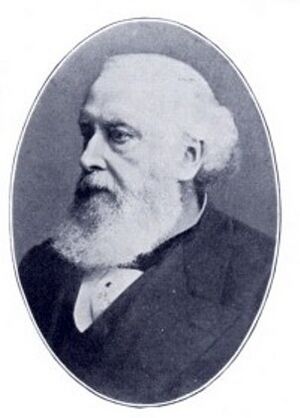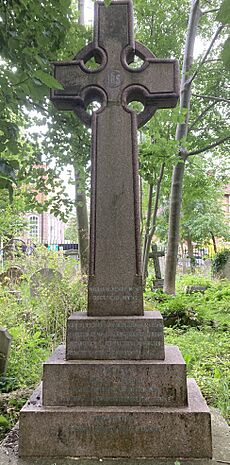William Henry Monk facts for kids
William Henry Monk (born March 16, 1823 – died March 1, 1889) was an English organist, church musician, and music editor. He wrote many popular hymn tunes. These include "Eventide," which is used for the hymn "Abide with Me." He also wrote music for "All Things Bright and Beautiful." Besides hymns, he created music for church services and special songs called anthems.
Contents
Who Was William Henry Monk?
William Henry Monk was born in London on March 16, 1823. We don't know much about his early life. But it seems he learned to play keyboard instruments very quickly. He might have been slower at writing his own music at first.
Monk's Early Music Career
By the time he was 18, Monk was already an organist. He played the organ at St Peter's Church in Eaton Square, London. He stayed there for two years. After that, he moved to two other organist jobs in London. These were at St George's Church and St Paul's Church. He spent two years at each church. These jobs helped him grow as a musician. They prepared him for bigger musical goals.
Working at King's College London
In 1847, Monk became the choirmaster at King's College London. A choirmaster teaches and leads a choir. While there, he became interested in using plainchant in church services. Plainchant is a very old style of singing, often without instruments. This idea came from William Dyce, a professor at King's College. Monk worked closely with him. In 1849, Monk also became the organist at King's College.
Changes at St Matthias' Church
In 1852, Monk started working at St Matthias' Church in Stoke Newington. He was both the organist and choirmaster there. He made many changes to the music. For example, he used plainchant when the choir sang psalms. He also made sure the music matched the church calendar. This meant different music for different times of the year. By this time, Monk was also arranging hymns. He was writing his own hymn melodies too.
The Famous Hymn Book
In 1857, people recognized Monk's musical talents. He was good at composing, arranging, and editing music. He was chosen to be the music editor for Hymns Ancient and Modern. This was a very important collection of hymns. The first book came out in 1861. It had 273 hymns.
Over time, more hymns were added to the book. It became one of the most popular hymn books ever sold. For this book, Monk wrote his famous "Eventide" tune. This tune is mostly used for the well-known hymn "Abide with Me." He also wrote other tunes for the book. These included "Gethsemane," "Ascension," and "St Denys."
Monk also set other hymns to music. For example, the hymn "God, that madest earth and heaven" was set to Monk's tune "Nutfield." He also created the tune "St Matthias." This tune is often used for the hymn "Sweet Saviour, bless us ere we go." Another tune, "St Ethelwald," was used for the hymn "Soldiers of Christ, Arise."
Teaching Music
In 1874, Monk became a professor at King's College. He taught vocal studies, which means teaching people how to sing. Later, he took on similar teaching jobs at two other famous music schools in London. In 1876, he taught at the National Training School of Music. In 1878, he taught at Bedford College.
Monk kept writing music in his later years. He wrote more hymn tunes, anthems, and other musical pieces. In 1882, Durham University gave him a special honorary degree. It was called a Doctor of Music.
William Henry Monk passed away on March 1, 1889. He was buried in Highgate Cemetery in north London.
Images for kids





